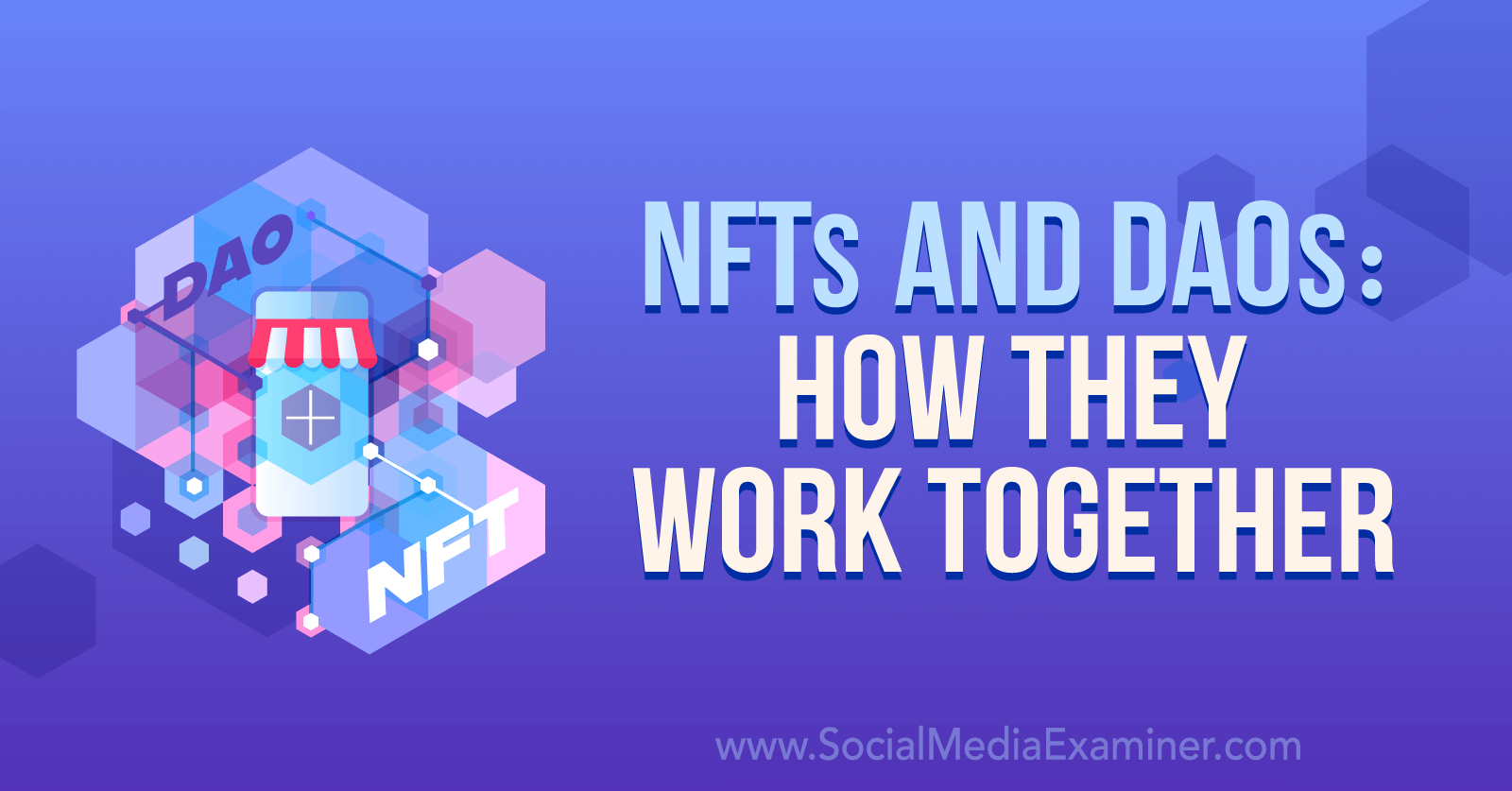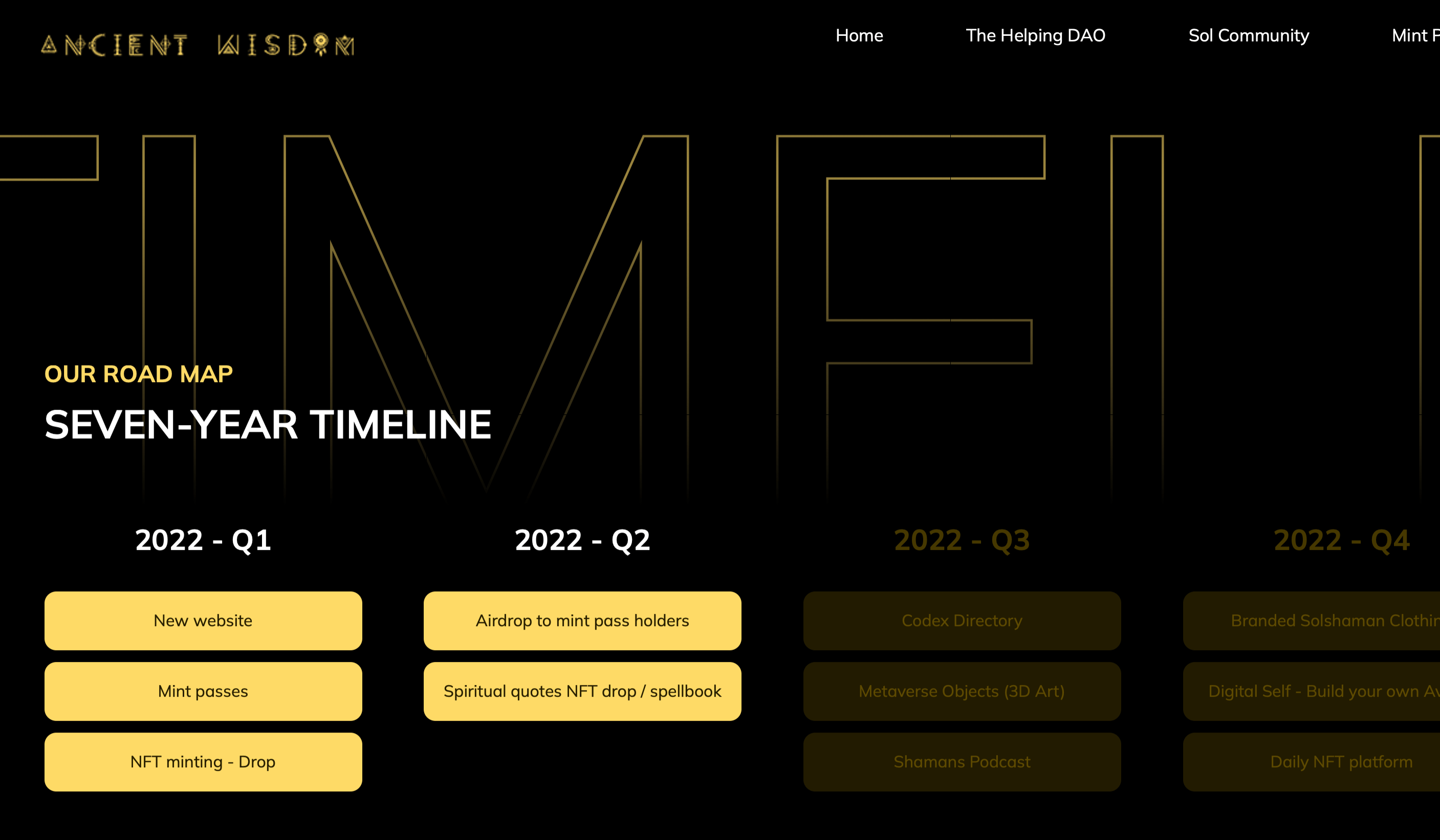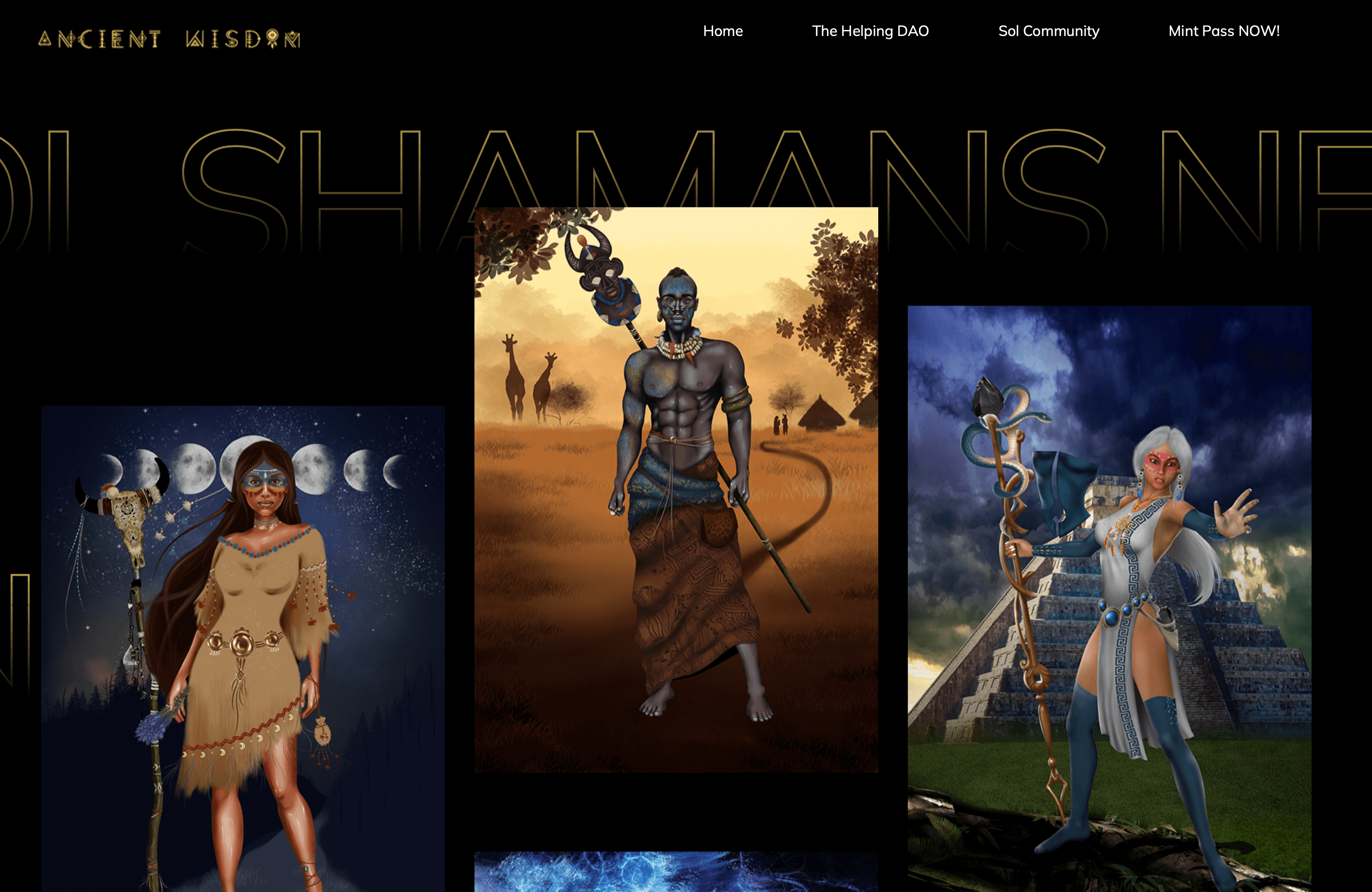Thinking of launching an NFT project? Wondering if DAOs make sense for your launch?
In this article, you'll discover why businesses should care about NFTs and DAOs and what you need to know about launching a successful NFT project.

Why Businesses Should Care About NFTs and DAOs
Non-fungible tokens (NFTs) and decentralized autonomous organizations (DAOs) are going to turn the business world upside down.
Traditionally, businesses have been set up with a founder, CEO, or some other governing body, and maybe even a board of directors. This person or small group has all the say in the direction the business takes. Every decision that's made, every mission or goal it pursues, is solely at the discretion of that centralized governing body.
Typically, with these traditionally built companies, the further away from the centralized governing body you are, the less influence you have. There's usually a president, founder, or CEO at the top, followed by a vice president, manager, supervisor, team leader, and then an employee. And as you go down the ladder, people have less and less value attached to their opinion about what the company is doing and why.
With a DAO, this hierarchy doesn't exist. Everyone is simply a member of the organization, with equal say and equal voting power based on the structure of the DAO. And the person who created the DAO could at any point leave the organization and everyone else would carry on the mission.
The real power behind NFTs and DAOs is in the smart contract coded into them. By using the smart contract, businesses can cut out a lot of red tape. The smart contracts work on triggers and actions: if this, then that. In other words, if this trigger happens, then this action happens.
But it's not just large corporations that can benefit from these smart contracts. Smaller businesses could also save time and money by being able to cut out some of the middlemen, red tape, and escrow fees and agents. If the work is finished, then the money gets transferred into their wallet without having to wait for someone to read over and approve an invoice or banks to process their fees.
One of the beautiful things about the relationship between an NFT and a DAO is that one can help build the other. Both NFTs and DAOs are built on smart contracts but they can also be built together.
You can code the smart contract of your NFT to help fund your DAO so every time the NFTs are sold, a percentage of the proceeds is automatically sent to the DAO. These funds help it achieve its mission, one of the goals on its roadmap, or launch a new project, depending on the other smart contracts in place.
Not every business is going to need to think about NFTs or DAOs, however. They may not be relevant to your business model at all. Before jumping in, take some time to really think about what a DAO would do for your industry, as well as your vision or mission of what that DAO would accomplish.
Important Considerations When Creating a DAO
Start by taking a deep look at your why. Why do you want to form a DAO and what would it mean for your industry? What kind of mission do you want to accomplish with a DAO?
Just as with nearly any business decision you've ever made, your why ends up being the driving passion behind everything. But in the case of a DAO, it also becomes the force through which you can find like-minded people who want to buy into your vision and accomplish the same mission.
Additionally, make sure you have the right legal governance framework for your DAO. Andreessen Horowitz offers a legal framework you can give to your attorney when you're creating your DAO.
Get World-Class Marketing Training — All Year Long!
Are you facing doubt, uncertainty, or overwhelm? The Social Media Marketing Society can help.
Each month, you’ll receive training from trusted marketing experts, covering everything from AI to organic social marketing. When you join, you’ll also get immediate access to:
- A library of 100+ marketing trainings
- A community of like-minded marketers
- Monthly online community meetups
- Relevant news and trends updates

Remember that a DAO is governed by code rather than people. That's a big paradigm shift. Essentially, a DAO is built on a smart contract, which is taking the place of all of those structures and positions within a traditional organization that we see today.
While some businesses may not work with or even want a DAO, at some point, every business is going to want to benefit from a smart contract. The smart contract eliminates the need for trust and intermediaries.
For example, there's no way to cheat a vote within a DAO. Everything is built on smart contracts, so depending on how you coded those contracts, everyone with the required tokens has their share of the vote. And because it's all transparent and on the blockchain, everyone can see it there. You can't forge these tokens or cheat your way into a higher vote than you have.
And because the DAO is formed with like-minded people all aiming to achieve the same goal, you also don't have to worry about one person coming in and trying to change the way the organization works or where the funding is spent based on personal ambitions.
Why Roadmaps Matter for NFTs
As with your DAO, you need to have a clear vision for your NFT. If your business is just creating a series of NFTs because the art looks cool or it's a collection, at this point in the game, very few people are going to care about it. Today, people are much more interested in what you're doing with your NFT. What benefit will they get if they acquire your NFT and do you have a long-term plan for your project?
The more successful NFT projects have a long-term plan in place—a roadmap that explains your vision, the goals you want to accomplish, and the future of the NFT you've created.

These long-term plans are known as roadmaps, and they help convey the long-term goals you have for the project—or if you're just out for a quick money grab. Of course, there's nothing wrong with creating a collection and aiming for that quick money grab. Create your collection, sell it off, and get out. There have been plenty of people who've done that. However, quick money grabs don't serve the community—the people who buy into your project.
A roadmap split into quarters will not only help your community see the value in your project but it can also help keep them engaged with your project over time. You may put up there that in Q1 you're going to do XYZ, then in Q2, your team is going to launch this other thing, and so on. Listing off some ideas of where you're heading will show your community that you're serious about your project and this isn't just another money grab.
Sadly, there have been instances of what's called a rug pull. An NFT project is marketed and hyped as community members buy into it. When the creators receive the funding, they ghost the project, leaving the community with nothing. It doesn't happen all of the time but it does happen often enough that people are increasingly on the lookout for signs of these scams.

Discover Proven Marketing Strategies and Tips
Want to go even deeper with your marketing? Check out the Social Media Marketing Podcast! Publishing weekly since 2012, the Social Media Marketing Podcast helps you navigate the constantly changing marketing jungle, with expert interviews from marketing pros.
But don’t let the name fool you. This show is about a lot more than just social media marketing. With over 600 episodes and millions of downloads each year, this show has been a trusted source for marketers for well over a decade.
How NFTs, DAOs, and Vaults Fit Together
When you combine NFTs with a DAO and a vault, you can collaborate with your community to reach your goals and develop projects. Crypto staking is a process through which NFTs are “locked” into a sort of vault, allowing the smart contracts to work, while at the same time, generating value for whoever has staked them.
For example, say an NFT project is putting 50% of its proceeds into a vault in a DAO, and the goal of the project is to grow the vault to $100 million in 7 years by investing portions of the money in the vault in Decentralized Finance (DeFi), Web 3.0 projects, metaverse projects, NFT projects, and so on.
Every member of the community who owns one of the NFTs and stakes it to the vault is able to vote on how the vault funds are used.
As the investment plays out, any yield is returned to the vault, thereby increasing its value. This scenario encourages people to hold onto their NFTs so they can continue to be part of the project.
The Sol Shamans Project
Sol Shamans' roadmap merges Web 3.0, a crypto token, NFTs, DeFi, GameFi (which has a play-to-earn element), and metaverse elements.
Similar to the example above, 50% of the proceeds from Sol Shamans NFT sales go into a vault, and the goal is to use that vault money to do charitable things and help make the world a better place in different ways.

To realize that goal, Travis and his partners are building a staking platform where Sol Shamans NFT owners can mint an NFT every day and can power up their NFTs and place them in the vault. The owner is then provided with a $HELP token tied to the value of the vault. The only way to earn $HELP tokens is by staking and placing your NFTs into this vault.
Because the value of the token is tied to the value of the vault, the total market cap of that token should always be at least equal to the value of the vault. In some cases, the market cap might be higher due to speculators and investors. The more revenue Sol Shamans earn, the more money they put into the vault, the higher the value of the vault grows, and everyone who's a part of the vault will win.
Working with 21 different artists and built on Solana's blockchain, Sol Shamans is a complex generative NFT series. While Bored Ape uses a single ape image with varying eyes and mouths, the first series of Sol Shamans will launch with 7,777 NFTs featuring 200 shamans including rare versions that nod to Leonardo da Vinci, Nicola Tesla, John Lennon, Martin Luther King, and Gandhi.
Each shaman NFT will have a specific staking power. The goal for owners is to raise each of their shaman NFTs to a level 7 staking power, which will allow them to earn more money via the $HELP token(s) tied to the vault.

A unique facet of Sol Shamans involves the release of a mintable spellbook this summer. After an owner initially stakes and powers up their shaman NFT and has the spellbook, they'll acquire daily NFTs in the form of a symbol, a shamanic item, a power word, sacred geometry, a sound, and so forth. After accumulating enough daily NFTs, owners will be able to power up their shaman to the next level.
Here's what that looks like:
- A level 1 shaman is worth 1,000 staking power.
- The spellbook is worth 500 staking power.
- The daily NFT staking power varies. Collect enough of the daily NFTs and you can power up your shaman or your spellbook to its next level.
Eventually, each shaman that reaches an as-yet-undetermined level will be turned into a 3D character that can be utilized in the metaverse.
A new series of NFTs will be minted each year for 10 years, with a total release of 77,777 NFTs. While these future releases will allow more people to join the community, each time a new series is released, the previous series will automatically level up. For example, all series 1 NFTs will maybe power up by 1.25, thereby gaining more staking power.
Travis Wright is a blockchain marketing advisor and NFT pioneer. He co-hosts the Bad Crypto Podcast and the Nifty Show, and is founder of the Sol Shamans NFT project. Find Travis at @teedubya on LinkedIn and Twitter.
Other Notes From This Episode
- Check out WAX, GameFi, Solana, Polygon, OpenSea, CryptoPunks, CryptoKitties, and Bored Ape Yacht Club.
- Find Andreessen Horowitz's legal framework for creating a DAO.
- Connect with Michael Stelzner at @Stelzner on Instagram.
- Watch the interviews on the Crypto Business YouTube channel.
Listen to the Podcast Now
This article is sourced from the Crypto Business podcast. Listen or subscribe below.
Where to subscribe: Apple Podcast | Google Podcasts | Spotify | Amazon Music | RSS
✋🏽 If you enjoyed this episode of the Crypto Business podcast, please head over to Apple Podcasts, leave a rating, write a review, and subscribe.
Disclaimer: The information provided on this website is provided solely for educational purposes and does not constitute any advice, including but not limited to, investment advice, trading advice or financial advice, and you should not treat any of the website’s content as such. Social Media Examiner recommends that you independently research any information contained on this Website and that you speak with an investment professional before making any decision to purchase, trade, hold or sell cryptocurrency. Nothing herein should be treated as a recommendation to buy, sell or hold cryptocurrency. Social Media Examiner cannot guarantee the accuracy of any information listed on the website and is not responsible for any missing or wrong information. All information is provided as is and should be used at your own risk. Social Media Examiner disclaims all responsibility and liability for your use of any information found on the website.
Attention Agency Owners, Brand Marketers, and Consultants

Introducing the Marketing Agency Show–our newest podcast designed to explore the struggles of agency marketers.
Join show host and agency owner, Brooke Sellas, as she interviews agency marketers and digs deep into their biggest challenges. Explore topics like navigating rough economic times, leveraging AI, service diversification, client acquisition, and much more.
Just pull up your favorite podcast app, search for Marketing Agency Show and start listening. Or click the button below for more information.

